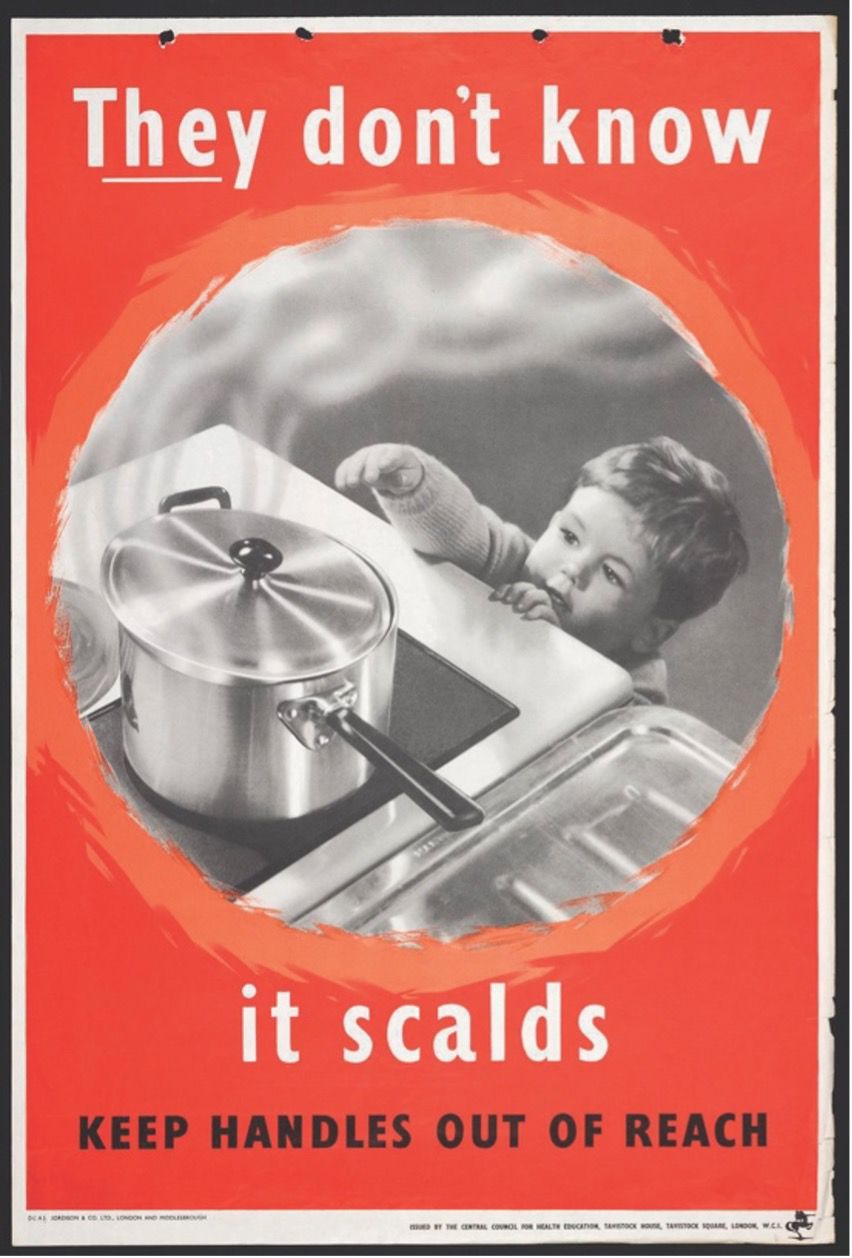Scalds
'Parents … would not … allow a loaded revolver to be within reach of their children … but these buckets of scalding water really offer a greater peril’.
Thomas Erskine Alexander, Belfast Coroner, 1934.
 Science Museum Group CC-BY
Science Museum Group CC-BY
Scalds are caused by hot liquid or steam, and can be just as serious as burns (caused by dry heat, like fire or hot metal). In the nineteenth century labouring men were most likely to be scalded, though women working in factories or domestically also featured in the statistics. As industrial technology changed, and with it jobs, workplaces and health-and-safety protection, children became the main group injured by scalds.
Before washing machines and modern cleaning products, buckets and kettles of hot water were everyday household features. Domestic scalds gained greater attention in the 1930s, partly because mortality rates were thought to be increasing.
In 1934, the Liverpool coroner stated that child deaths there from burns and scalds were higher than road traffic incidents. Researchers at Glasgow Royal Infirmary were already beginning to use burn-ward records stretching back to the mid-1800s to understand scald mortality.
In 1942/3, the Glasgow researchers found that domestic scalds accounted for almost half of their patients, with 19.3% of these being children under 11 years old, and around 14% caused by hot tea! They also saw how deadly infection was for burn and scald injuries. Fortunately the 1940s discovery of the antibiotic penicillin transformed survival rates. Today hot drinks continue to be the main (avoidable) source of scalds.
In the 1800s, men working in heavy industries, mining, and food preparation were especially susceptible to scalds. In 1880, foreman labourer George Knowles, ‘youth’ Charles Nelson, and foreman Mr Edward Duffield were engulfed in steam and scalded at a steel mill in Dronfield, Derbyshire. Knowles died. The others were scalded but survived.
© The British Library Board. All rights reserved.
In Liverpool in 1882, a woman went on a five-minute errand. Her daughter Emma toppled from a high chair into ‘a tub of hot water’ and died. Yet boys were thought more likely to be scalded and girls burned; this started changing with safer clothing and bathing, and as society began uprooting gender stereotypes.
Newspaper image © The British Library Board. All rights reserved. With thanks to The British Newspaper Archive
Safety organisations have influenced state and industry to improve everyday domestic appliances. Since the 1980s simple innovations, such as introducing coiled flexes on kettles, have reduced the number of emergency scald cases. While in many ways we are now safer, there are still things we can do to prevent scalds.

©Crown copyright, 2017
Read full description of the infographic.